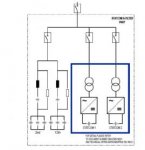spikes2020
Member
- Location
- Nashville, TN
- Occupation
- Electrical Engineer
I don't expect a lot of help from here, but any advice on any these items would be helpful (Synchronous Condenser, STATCOM or SVC).
I currently work at a steel mill using an arc furnace that operates 3 phase ~20,000A at 500-800V there is an 'on load' tap-changer 13.8kv 45MVA transformer. Anyway our issue is we have a flicker issue along with power factor and some harmonics. We have a 3rd harmonic filter, and a capactior bank for the power factor, but i think both of them they are slightly undersized.
The utility would like us to fix some of these issues. We are looking at a synchronous condenser, STATCOM or SVC.
Anyone else use an arc furnace? what do you use?
Has anyone looked at or used any of these?
What is the maintance on them?
Did they solve your problem?
Any advice on further reading on these devices?
Just a shot in the dark
Thanks!
Jon W
I currently work at a steel mill using an arc furnace that operates 3 phase ~20,000A at 500-800V there is an 'on load' tap-changer 13.8kv 45MVA transformer. Anyway our issue is we have a flicker issue along with power factor and some harmonics. We have a 3rd harmonic filter, and a capactior bank for the power factor, but i think both of them they are slightly undersized.
The utility would like us to fix some of these issues. We are looking at a synchronous condenser, STATCOM or SVC.
Anyone else use an arc furnace? what do you use?
Has anyone looked at or used any of these?
What is the maintance on them?
Did they solve your problem?
Any advice on further reading on these devices?
Just a shot in the dark
Thanks!
Jon W




